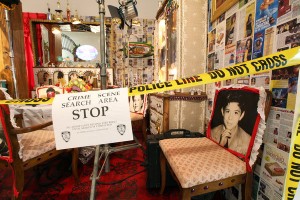 An exhibit at the New Museum called NYC 1993 focused on the works from the Whitney Biennial, a year which is known to have been “notoriously political”. Following the exhibit’s debut, Harper Montgomery, a Professor of Modern and Contemporary Latin American Art and Distinguished Lecturer at Hunter College, raised a controversial question: Is it possible to stage acts of genuine transgression from within the museum or is transgression inevitably swallowed up by the institution?
An exhibit at the New Museum called NYC 1993 focused on the works from the Whitney Biennial, a year which is known to have been “notoriously political”. Following the exhibit’s debut, Harper Montgomery, a Professor of Modern and Contemporary Latin American Art and Distinguished Lecturer at Hunter College, raised a controversial question: Is it possible to stage acts of genuine transgression from within the museum or is transgression inevitably swallowed up by the institution?
Professor Montgomery went on to point out: “Alas, this question, which once felt so vital, now seems in danger of becoming entirely irrelevant. For the most part, museums today are viewed as open, interactive fields for socially engaged artistic practices. As milder, more playful forms of subversion have taken center stage, earnest transgressions have faded from view. This has created the illusion that the very targets of transgression—the museum and its authority to determine what qualifies as culture—have also grown more democratic and inclusive.”
“What does the New Museum’s revisitation of the transgressions of 1993 tell us about how art and its institutions have changed in the intervening 20 years? The Pollyanna-ish view is that museums truly have grown more diverse and transparent, thus rendering contemporary acts of transgression largely unnecessary. Didn’t the inclusion of so many women and people of color in the boisterous and irreverent 1993 Whitney Biennial signal the beginning of a new era? And isn’t there an exhibition of punk’s influence on fashion up at the Metropolitan Museum of Art right now?”
Montgomery states that populism is a poor substitute for transgression’s ability to give voice to social and psychological repression. “Many forms of transgression were on view in the New Museum’s NYC 1993.”
She continued, “One of the most forceful transgressions of the 1993 Biennial proved to be a work that questioned the Whitney Museum’s authority as a space of aesthetic experience. Daniel J. Martinez made conscripted performers out of each and every visitor to the exhibition by inscribing the badges museum entrants are required to wear with the phrase, “I can’t imagine ever wanting to be white.” Racially marking visitors’s bodies called attention to the different roles people played at the Whitney, an Upper East Side museum where the security staff was largely of color and the patrons were mostly white. In highlighting the whiteness of the visitors, Martinez also revealed that the very experience of contemplating art was marked by the politics of race.”
“Martinez’s tag piece for the Whitney carried the charge of this conscripted role: visitors were required to participate in order to enter the museum. The confrontation this staged between the authoritative museum and the racialized bodies that occupied it must have been palpable. Such a confrontation would have been impossible to restage in 2013 at the New Museum, where examples of Martinez’s original tags were instead shown as historical material, framed and hung on the wall. The utter impossibility of restaging Martinez’s work confirms that transgressions against the museum tend now to appear either as chapters from a history or as exercises in collectivity. Often, it seems like the museum has indeed inscribed transgression within its very structure.”
Professor Montgomery concluded that Martinez’s work demonstrates perfectly the way in which the authority of museums continues to make such institutions an inevitable and ideal target for transgression.


